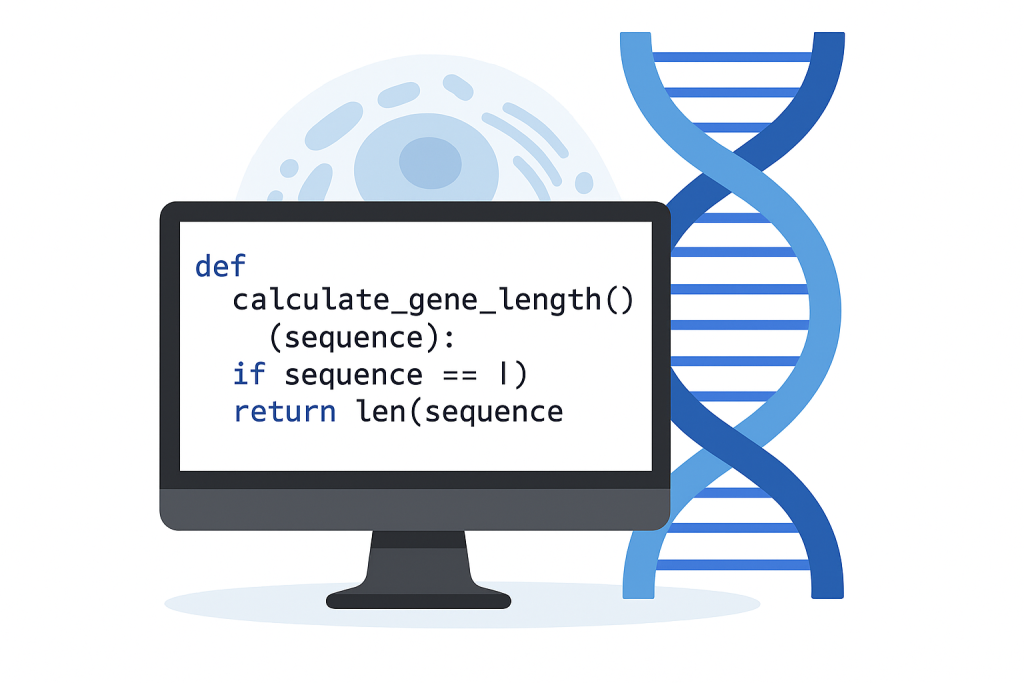The next generation won’t just code machines—they’ll code life.
The Shift from Digital to Biological Thinking
Computing once defined innovation. Now, life itself is becoming programmable.
For decades, computer science has been the backbone of STEM education. Students learned to code logic into software, automate systems, and build digital worlds. But a new frontier is emerging where programming no longer stops at the screen—it extends into biology.
Synthetic biology and bioinformatics now allow students and scientists alike to write and edit biological code—DNA sequences that determine how organisms behave. Just as software engineers use binary logic to control machines, biotechnologists use genetic logic to guide living systems.
In short, biology is becoming the next computing platform, and education is racing to catch up.
DNA as the Ultimate Programming Language
Every cell is a processor, every genome a line of code.
At its core, DNA is an information system. The four letters—A, T, C, and G—form the instructions that define how every organism grows, repairs, and interacts with its environment.
This structure mirrors how computer code works:
- DNA = Source code
- Proteins = Executed functions
- Organisms = Operating systems
Learning to understand and manipulate this biological code gives students the power to design systems that can heal, regenerate, or even clean the planet. The classroom challenge is clear: teaching biology as a programmable medium, not just a descriptive science.
Biological Programming in the Classroom
Teaching “life code” requires tools that make biology interactive, not abstract.
Just as early computer labs democratized access to programming, today’s schools are beginning to integrate biological simulation and design platforms. Students can model genetic systems on-screen before experimenting in a safe lab environment.
Examples include:
- CRISPR simulations for teaching gene editing principles.
- Bioinformatics software for analyzing genetic data.
- AI-driven modeling to predict cellular behavior.
These platforms transform biology from memorization to design thinking—students learn how to solve problems by building systems, not just studying them.
Why Biology Is Replacing Code Literacy with Life Literacy
The 21st-century skill set isn’t just digital—it’s biological.
Learning to code taught students how to think algorithmically. Learning biology through a computational lens teaches them to think systemically—understanding how feedback, adaptation, and resilience work in living systems.
This mindset is critical for addressing challenges like climate change, public health, and sustainability. Students who understand biological programming can:
- Engineer microbes that clean water or capture carbon.
- Model pandemics and design vaccine strategies.
- Develop new food and energy systems using living materials.
In short, biological literacy is the next digital literacy—the skill that will define future innovators and problem solvers.
Integrating Bioinformatics and Coding in STEM Curricula
Data is the bridge between biology and computing.
The explosion of genomic data has made bioinformatics a cornerstone of modern biology. Students now need to learn how to code with data derived from life itself—analyzing genetic sequences, protein structures, and environmental datasets.
Schools and universities are beginning to merge these domains by teaching:
- Python and R for bio-data analysis
- Machine learning applied to genetic research
- Biological modeling integrated with environmental data
This cross-training produces hybrid thinkers—students who can move between code and cell, capable of inventing in a world where biology and data converge.
Ethics and Responsibility: Teaching More Than Technique
When students learn to code life, they also learn to respect it.
The power to design biological systems comes with ethical weight. As schools introduce synthetic biology into curricula, ethical literacy must develop alongside technical skill. Students should learn:
- The importance of containment and biosafety.
- The implications of genetic modification.
- The social and ecological consequences of biotechnological design.
Just as computer science education evolved to include cybersecurity and digital ethics, biological education must emphasize bioethics and responsibility. The next generation of scientists won’t just ask “Can we?”—they’ll ask “Should we?”
Preparing Students for the Hybrid Workforce
The jobs of the future will blend biology, coding, and creativity.
From regenerative medicine to sustainable materials, industries are already seeking professionals fluent in both biological and computational systems. Future roles may include:
- Bio-software engineers who design DNA sequences.
- Digital biologists who simulate ecosystems.
- AI-biotech specialists who merge algorithmic and genetic intelligence.
Educators who teach the code of life aren’t preparing students for a niche—they’re preparing them for the next industrial paradigm, where biology and technology converge.
Conclusion: From Binary to Biological
Computer science taught humanity how to program logic. Biology will teach it how to program life.
The classrooms that embrace this shift—teaching DNA like syntax, bioethics like civics, and data like ecology—will produce the next generation of innovators. These students won’t just build smarter machines; they’ll build smarter ecosystems, smarter materials, and smarter futures.
In tomorrow’s world, understanding life’s code will be as essential as understanding computer code. The only question left is: how soon will we start teaching it?


